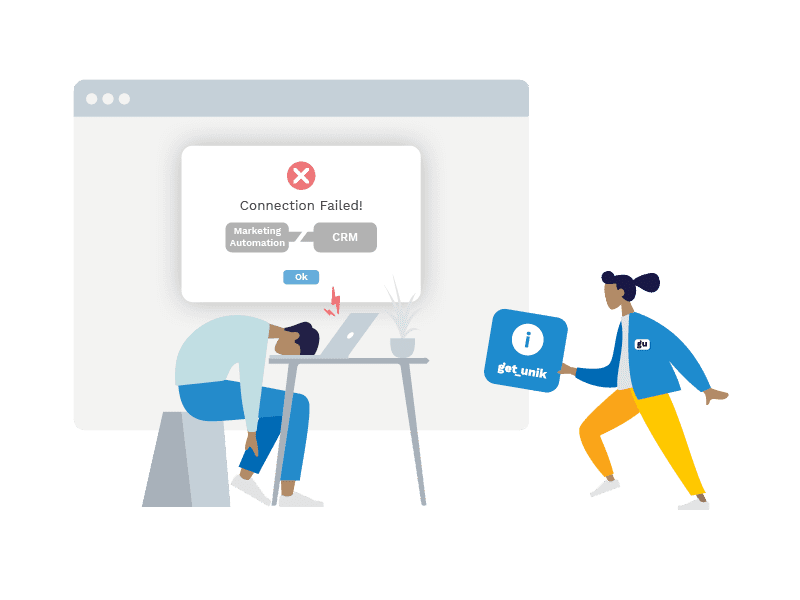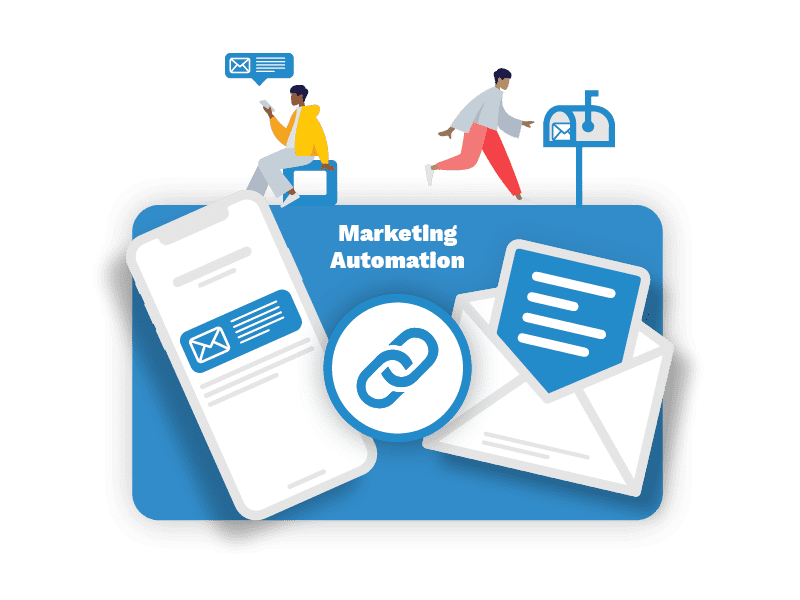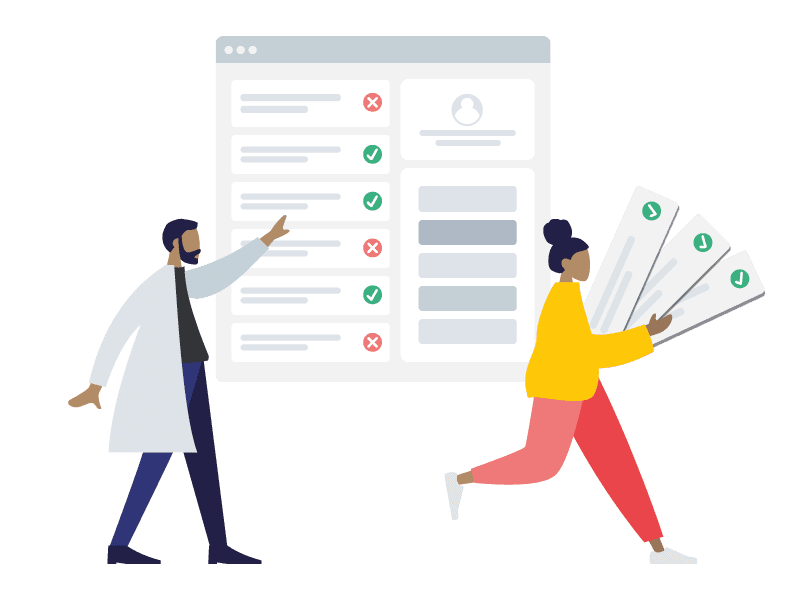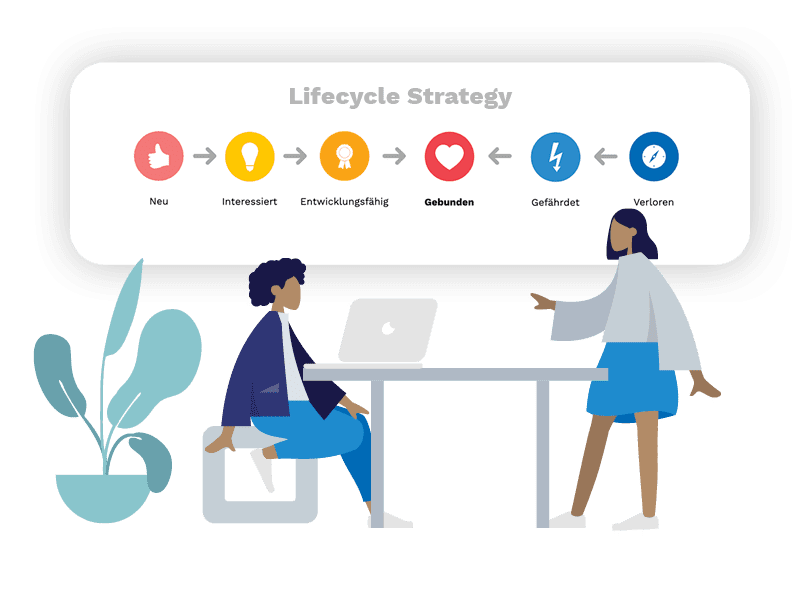CRM and Marketing Automation
CRM and Marketing Automation – 3 things to consider
For some years now, the term marketing automation has been a buzzword in the fundraising community. It is usually mentioned in the same breath as cross-channel communication or donor journeys. And while the concept behind it sounds simple and promising, many nonprofits experience a rude awakening when they find out plug-and-play – simply connecting CRM and the chosen marketing automation software – is only half the battle. Linking the two tools involves technical challenges but also strategic and conceptual considerations. Oftentimes organisational development is also required. Why is this the case? And what needs to be taken into account to ensure that an integration project is successful and low-risk? We are here to answer these questions for you.

More than a “digital” task
Marketing automation is often understood as a purely digital undertaking. But this is not the case. Effective marketing automation requires a holistic approach that encompasses target audiences across all channels. In many NPOs, however, marketing automation is only used in departments that are exclusively dedicated to digital fundraising. Employees in these departments are social media-savvy, design great donor journeys, launch Google Ad campaigns, and meet in their own online fundraising events and forums. Elsewhere, entirely separate departments dedicated to offline marketing are simultaneously implementing tried and tested offline measures.
However, today’s target audiences can no longer be neatly put into online and offline boxes Rather, journeys are developed in such a way that they tailor to the individual’s level of involvement with the organisation. Develop this relationship based on their particular needs and interests. The focus here is on considerations such as: What do I want the person to experience in the given situation? How can I win their goodwill, involve them, etc.?
Commercial market leaders have fully incorporated this consideration into their strategy. The phrase “You might also be interested in this …” is ubiquitous and demonstrates said customer orientation. Naturally, this also shapes the expectations of today’s target audience.
This clearly shows that the shift from fundraising campaigns to fundraising journeys means much more than merely implementing technical adjustments in CRM and the fundraising software used or “plugging in” a marketing automation solution. Indeed, nothing less than a thorough adjustment in the way the entire organization interacts with its target audiences is required. This cultural change cannot be accomplished overnight and must be addressed specifically.
However, it takes more than a cultural change: Marketing automation must link digital and offline communication – in the way the individual wishes and needs to be addressed. That is why some existing fundraising departments in organizations need to be reorganized to suit a more holistic approach or even replaced by a team that acts and thinks as one.

In the “data-flow”
In addition to holistically coordinated offline and digital fundraising work processes, the synchronization of data between CRM and the marketing automation solution used is critical. Why is this so important? Let’s take cross-channel communication as an example: a lead that was acquired through a face-to-face campaign, and whose contact details have been typed in manually into the CRM, should receive automated information via e-mail. Conversely, a lead acquired online with information initially obtained through your marketing automation tool should also be available in your CRM for mailing campaigns purposes. Thus the following considerations regarding data exchange should be noted:
- Both tools must be able to communicate with each other via a bidirectional interface, preferably in real time. As consumers, we are used to ordering today and receiving the order the next day… Naturally, that’s also what’s expected when interacting with NPOs.
- As part of an integration project, careful consideration should be given to several key issues. First, exactly which system needs which data. Secondly, via which interfaces is data meant to flow from one system to the other. Thus, a concept for the data architecture is needed, because not all data from both systems can be synchronized permanently, if only for performance reasons. For a successful mapping, it is therefore necessary to consider which individual data fields are required in the respective systems and how they are to be defined exactly. This does not only include data on contact details, but all information that enables targeted segmentation and further categorization of the person targeted.
- Data sovereignty: The CRM in it’s role as a “control center” for most interaction with the users plays a central role in the integration of both tools. That is why the CRM should be flexible enough to allow the application of data concepts that fit the strategic objectives of the marketing automation deployment. This includes enabling a holistic mapping of all leads and contacts generated from all channels.
- In addition to the data architecture, however, developing a data concept is also important. Due to the focus on offline communication, e.g. mailing, most NPOs primarily have their donors’ postal address in mind in the data concept of their CRM, and thus the household. In the digital domain, on the other hand, the individual’s e-mail address, for example, is the “unique identifier.” CRMs whose data management concepts are not household-oriented but individual-oriented therefore make the work of a marketing automation system easier.
- Data quality: Before CRM and marketing automation solution are connected, you should ensure that the data of both solutions is of high quality. As a general rule, only data that is consistently obtained, sustainably maintained, and actually needed should be kept on the databases. When implementing such projects, which are intended to combine basic CRM, web and marketing automation solutions, for example, it should be noted that several implementation partners often have to work together. This leads to a considerable coordination effort, as different system and work cultures clash. It is therefore necessary that the commissioning organization can ensure qualified project management.

Planning -> Simplification -> Automation
The very term “Journey” suggests a journey with multiple stops. Depending on the stop, the journey can lead in different directions. Taking target persons on a journey that can lead over several stages and several possible itineraries is demanding in terms of planning. To ensure that the traveler is not left behind, the trip must be carefully planned. The following factors must be considered when creating automated journeys:
- Plan the journeys carefully and create a plan for all journeys. Draw a graphical overview plan for your journeys – e.g. in the form of a “subway plan” or a data flow diagram. This will show you where the traveler can get lost or what decisions and dependencies need to be considered in the journey.
- Keep the plan as simple as possible. In the future, people will want to be treated even more according to their personal preferences and interests. This will lead to new variations – “switching stations” – in your plan. Simpler Journeys will also ensure that you can secure the necessary amount of content.
- Design your journeys in such a way that the decisions for one or the other treatment variant do not have to be made by humans, but can be determined by the software system via fundamentally valid sets of rules. This ensures that a significant part of your journeys can be automated, which in turn saves your human resources.
It’s not entirely surprising that few NPOs have implemented established journey concepts or tried integrating their CRM with a marketing automation solution. In most cases, Journeys today are limited to digital concepts. Possible reasons for this are the complexity of conceptual and technical implementation as well as the good functioning of previously analog fundraising campaigns. Nevertheless, it is time to take the next step. Because those who think and steer CRM and marketing automation together in good time and have thus designed and implemented appropriate journeys across all relevant channels will be able to exploit market opportunities. We are happy to accompany you in this process.

About the authors
Harry Graf, Senior Consultant, Co-Managing Director at amender ag
Harry Graf has provided services in the areas of analysis, organization, change management and consulting to over 70 profit and non-profit companies over the past 25 years.
Gesine Schuchert, Consultant, Co-Managing Director at amender ag
Gesine Schuchert was previously responsible for IT & Finance at a Swiss foundation and works in the areas of IT (project) management, organizational development and data protection.
Amender AG supports non-profit organizations on their way to requirement-oriented and innovative organizational and software solutions.
